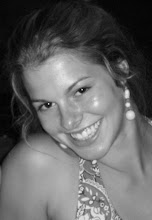Strolling through Berlin on the weekend before Monday, November 9th, you wouldn’t have been surprised you to learn that Berlin won the award for “Best Graffitied European City.” After a panicked few minutes in which Savanna and I could not find each other in the gargantuan Hauptbahnhof (main train station) on Friday, I escorted her on a walking tour of my new home city, starting with the main tourist sites. We started with the famous glass-domed Reichstag and wandered along the route where the Berlin wall stood until 1989— now lined with 1,000 colorful “dominoes.” These temporary blocks of Styrofoam had been sent all over the world, one hundred were painted by notable international artists, and the rest by German schoolchildren. They lined the metal strip eternally marking the city’s division from Potsdamer Platz to the Brandenburger Tor, where the dominoes would fall during the dramatic ceremony celebrating the twentieth anniversary of the fall of the Berlin wall on Monday.
On Saturday, we made the obligatory pilgrimage to Checkpoint Charlie, the renowned border crossing between West and East Berlin that was used primarily for American diplomats. Pieces of the wall— looking oh-so-much like slightly sturdier dominoes— dotted Berlin, serving as reminders of the momentous upcoming anniversary and for easy access to tourists with ready cameras. Since the fall of the wall, the nature of Berlin has shifted drastically from the highly symbolic border between socialist block countries and the free world to the “poor, but sexy” European tourism capital.
It didn’t rain that weekend (for the first time in November), so we meandered through the open markets looking at street art, buying a 1945 copy of Grimm’s Fairytales, and drinking Glühwein (German mulled wine) from plastic cups. Selecting carefully from Berlin’s double abundance of museums (neither half of the city would allow that their museums, their zoo, or their opera house be dismantled after unification), we visited the Pergamon Museum, a home to Greek temples, Roman houses, and Babylonian gates, and the Neues Museum, newly reopened to feature the bust of Nefertiti and the Trojan jewelry discovered by Heinrich Schliemann that the Russian didn’t steal upon occupation. (The note accompanying an ancient headdress remarks snidely that the rest of the Trojan treasure can be found in Moscow, where it is being held “in continued breach of international law.”) To be fair, as we walked through the room containing the Greek temple, through the Roman Courtyard, and through the gates of Babylon, Savanna balked in astonishment: “The Germans stole the Ishtar Gates?” Umm…. yes. But if anyone from Turkey would like to see some of his or her former national treasures, the Pergamon Museum is open seven days of week and till 10pm on Thursdays.
In the evening, we met up with friends in Berlin’s popular Orangienburgerstrasse, a locale where one can find any variety of nightlife from “Aufsturz,” a cozy restaurant and bar that houses a hundred beers from all over Europe, to some of Berlin’s more famous clubs, to a bombed out department store turned heavily-graffitied squatter art gallery. After dinner, we headed to this last to wander through Indie-looking art studios, gaze at creations from East Berlin street signs, examine jewelry made from spoons, and tilt our heads quizzically at the occasional portrait of an Indian overlaid on a Confederate flag. (No one ever promised that freedom of speech and paint wouldn’t lead to some outlandish results…)
On Sunday, we traveled back to the era of the liberal-minded Frederick the Great, who preferred building palaces in Potsdam for his friends to the war-waging typical of other German emperors. While the gardens near the palace of Sanssouci and the Neue Palais are astounding, their eighteenth-century beauty is still overcast by the recent days when Potsdam, to the northwest of Berlin, was a prominent but predictably gray city in East Germany. The miniature Brandenburger Tor in the Altstadt (oldest portion of the city) now overlooks a sufficiently bustling street of shops, cafes, and restaurants and the ongoing reconstructions of several national monuments.
Our adventures of the weekend were only an appetizer to the feast of spectacle that took place on Monday evening, the twentieth anniversary of the fall of the Berlin Wall. Over 100,000 wet people (the November rained returned) congregated in front of the Brandenburger Tor at 5pm to await a program than included performances from Bon Jovi, a concert directed by Daniel Barenboim, interviews with former members of the East German resistance movement, and speeches from Klaus Wowereit (the current mayor of Berlin), President Sarkozy of France, Mikhail Gorbachev, Gordon Brown, and, of course, Angela Merckel. President Obama was distressingly absent from the festivities, but he had recorded a brief speech that was projected over the screens flanking the Brandenburger Tor while the crowd waited for official start to the festivities. November 9th is a tricky date in German history, as it marks not only the fall of the Berlin wall, but Kristallnacht, also known the Night of Broken Glass, in 1938. Certainly all the important speeches memorialized the darker moments of German history as well as emphasizing the areas of the world where walls have yet to be broken down. The man standing next to me in the crowd was originally from South Korea; it was evident that the commemoration of the unification of Germany through the peaceful dissolution of a communist state was fraught with personal significance for him. The night, full of jubilation and sated memories, ended in fireworks and fallen dominoes.


A beautiful picture... I do appreciate Graffiti. :)
ReplyDeleteWe love you K-Bird!!! thanks for the great post!
ReplyDeleteRyan and Jenna and Sara and Bryceson